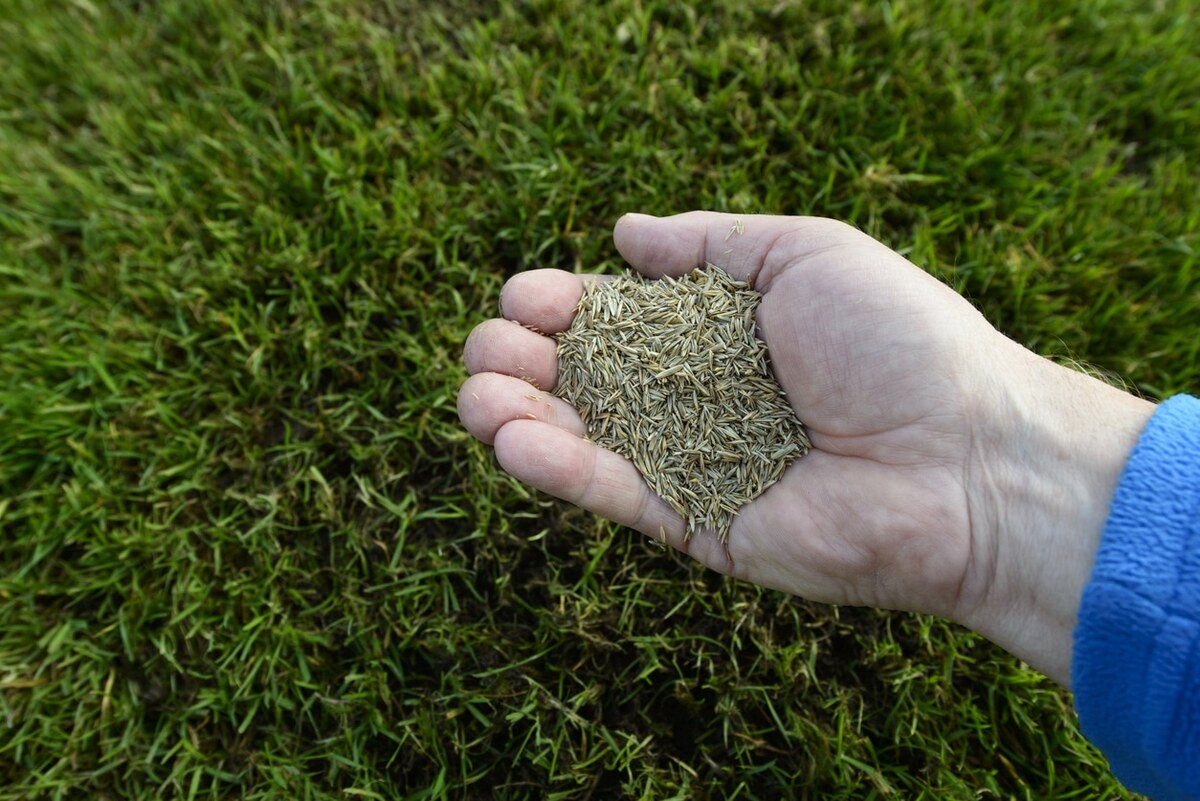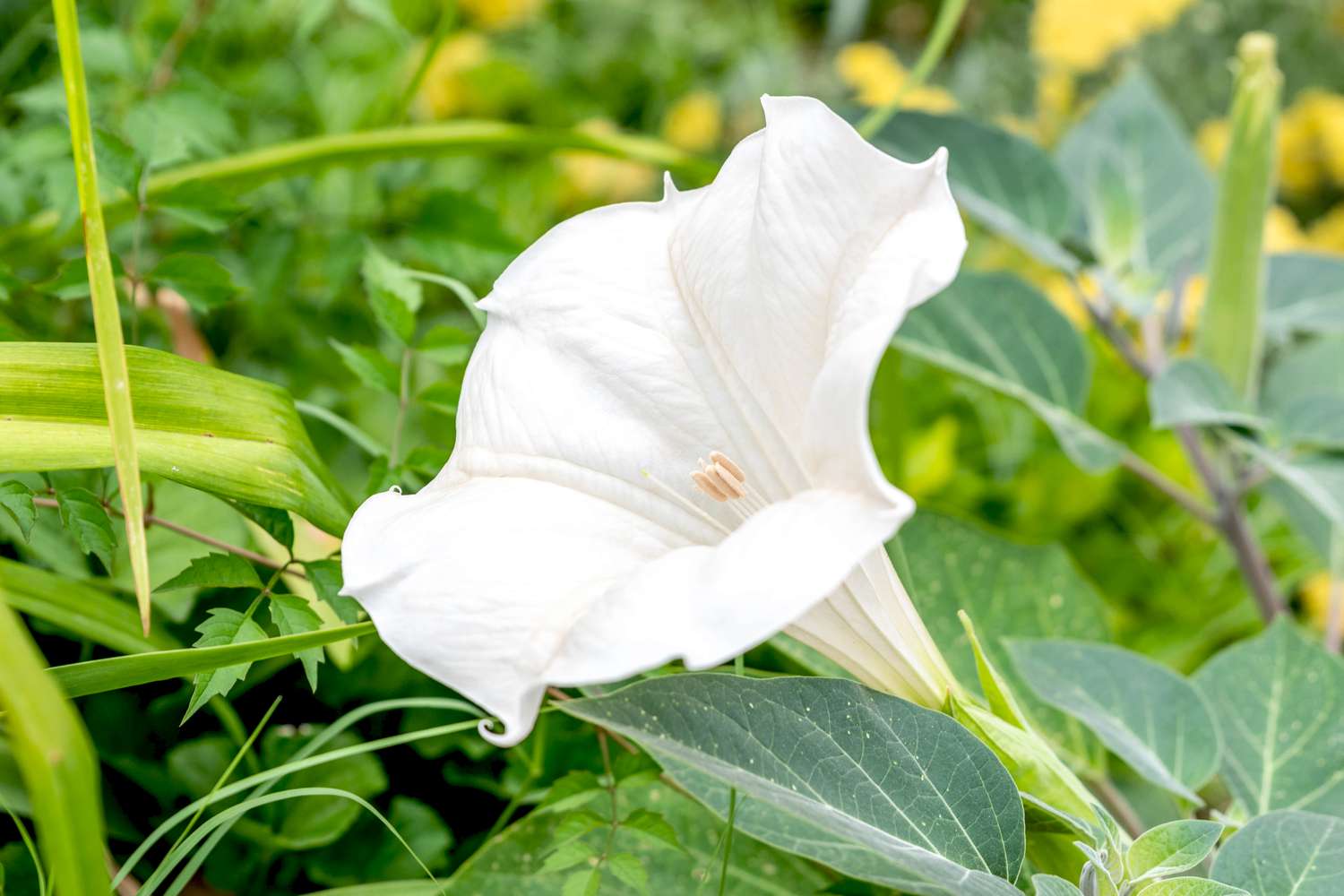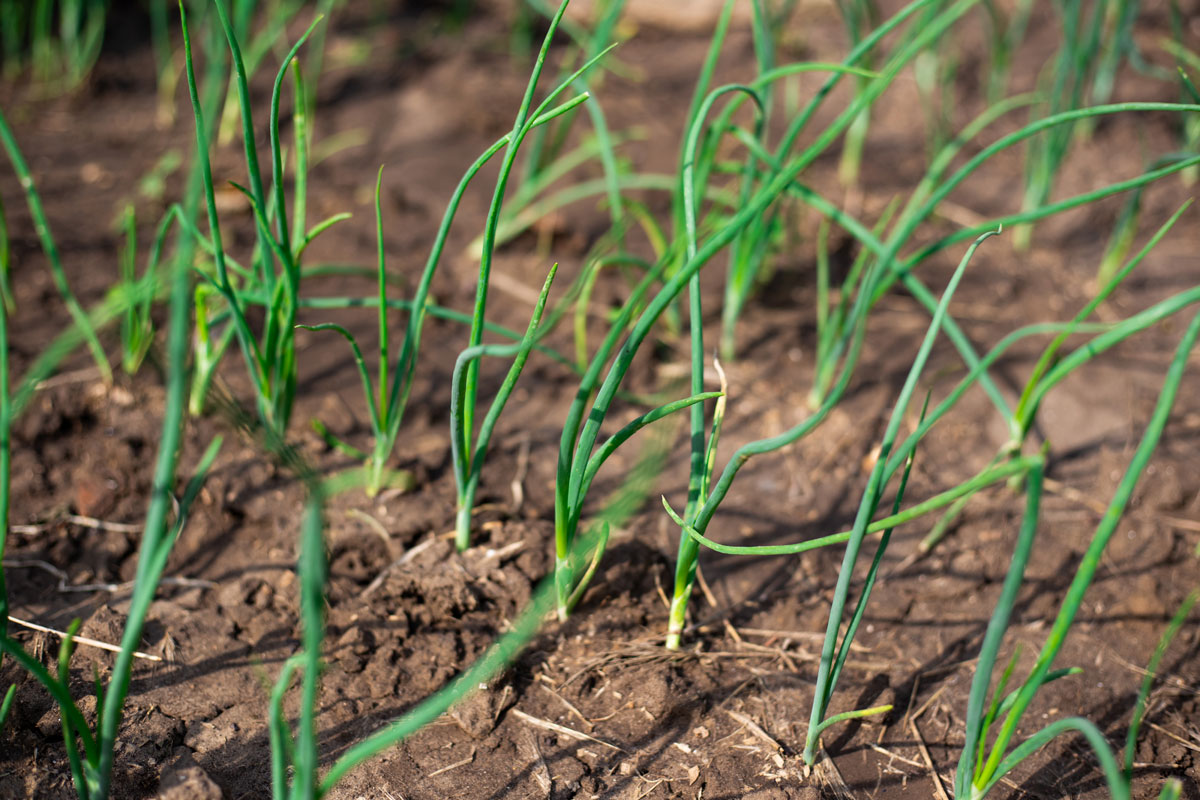Home>Gardening & Outdoor>Landscaping Ideas>When To Plant Grass Seed In Rochester, NY


Landscaping Ideas
When To Plant Grass Seed In Rochester, NY
Modified: February 18, 2024
Discover the best time to plant grass seed in Rochester, NY with our expert landscaping ideas. Ensure a lush, green lawn with our planting tips and advice.
(Many of the links in this article redirect to a specific reviewed product. Your purchase of these products through affiliate links helps to generate commission for Storables.com, at no extra cost. Learn more)
Best Time to Plant Grass Seed in Rochester, NY
The ideal time to plant grass seed in Rochester, NY, is during the late summer to early fall, typically from mid-August to mid-September. This period offers the perfect combination of warm soil temperatures and cooler air, creating optimal conditions for grass seed germination and establishment. By choosing to sow grass seed during this window, homeowners in Rochester can set the stage for a lush, healthy lawn that will thrive throughout the year.
During late summer and early fall, the soil retains warmth from the summer months, which encourages rapid seed germination and root development. Additionally, the cooler air temperatures reduce the risk of heat stress on the young grass seedlings, providing them with a favorable environment for growth. This timing also aligns with the natural growth cycle of cool-season grasses, allowing the newly planted seeds to take advantage of the upcoming fall and spring seasons for robust development.
By strategically timing the planting of grass seed in Rochester, NY, homeowners can maximize the success of their lawn establishment efforts. This approach capitalizes on the region's climate patterns and seasonal transitions, giving the grass seedlings the best chance to flourish and create a vibrant, resilient lawn.
In summary, the late summer to early fall period presents the best opportunity for planting grass seed in Rochester, NY, as it leverages the favorable combination of warm soil and cool air temperatures to support robust seed germination and establishment. By aligning with the natural growth cycle of cool-season grasses, homeowners can set the stage for a thriving lawn that will endure the varying conditions of the Rochester climate.
Key Takeaways:
- Best Time to Plant Grass Seed in Rochester, NY
The best time to plant grass seed in Rochester, NY is late summer to early fall. This creates the perfect conditions for grass seed to grow and establish a healthy, vibrant lawn. - Factors to Consider Before Planting Grass Seed
Before planting grass seed in Rochester, NY, consider climate, soil, sunlight, maintenance, and potential challenges. These factors impact the success of your lawn and help create a resilient, thriving landscape.
Read more: When To Plant Grass Seed In NY
Factors to Consider Before Planting Grass Seed
Before embarking on the journey of planting grass seed in Rochester, NY, it's crucial to consider several factors that can significantly impact the success of the lawn establishment process. By carefully evaluating these elements, homeowners can make informed decisions and set the stage for a thriving and resilient lawn. Here are the key factors to consider before planting grass seed in Rochester, NY:
1. Climate and Weather Conditions
Rochester, NY, experiences a temperate climate with distinct seasonal variations. Understanding the local climate and weather patterns is essential when planning to plant grass seed. Factors such as average temperatures, precipitation levels, and frost dates play a pivotal role in determining the most suitable grass species and the ideal time for planting. By selecting grass varieties that are well-adapted to the region's climate, homeowners can ensure better resilience and long-term success for their lawns.
2. Soil Type and Quality
The composition and quality of the soil have a profound impact on the growth and health of grass plants. Before planting grass seed, it's important to assess the soil type, drainage capabilities, and nutrient levels. Conducting a soil test can provide valuable insights into the pH levels, fertility, and any necessary amendments required to create an optimal growing environment for the grass seed. By addressing soil quality issues proactively, homeowners can enhance the chances of successful germination and establishment.
3. Sunlight and Shade Patterns
The amount of sunlight and shade in the intended lawn area is a critical consideration when selecting grass seed varieties. Different grass species have varying sunlight requirements, and understanding the sunlight and shade patterns in the landscape can help in choosing the most suitable grass types. By aligning the grass seed selection with the specific light conditions, homeowners can promote healthy growth and prevent issues related to inadequate or excessive sunlight exposure.
Read more: When To Plant Blackberry Seeds
4. Maintenance and Watering
Before planting grass seed, it's essential to evaluate the maintenance requirements and watering needs of the chosen grass species. Some grass varieties may demand more frequent mowing, fertilization, or irrigation, while others are more low-maintenance. By considering the available time for lawn care and the capacity for regular watering, homeowners can select grass seed varieties that align with their maintenance preferences and lifestyle, setting realistic expectations for ongoing lawn care.
5. Potential Challenges and Solutions
Anticipating potential challenges, such as weed competition, erosion, or pest issues, is crucial before planting grass seed. By identifying these challenges in advance, homeowners can develop proactive strategies to mitigate risks and promote the successful establishment of the new lawn. Whether it involves implementing weed control measures, erosion prevention techniques, or pest management strategies, addressing potential challenges beforehand can contribute to a smoother and more effective lawn establishment process.
By carefully considering these factors before planting grass seed in Rochester, NY, homeowners can make well-informed decisions and create an optimal environment for the successful establishment of a healthy and vibrant lawn. Each of these considerations plays a vital role in shaping the overall outcome of the lawn establishment process, contributing to the long-term beauty and resilience of the landscape.
Steps to Planting Grass Seed in Rochester, NY
-
Prepare the Soil: Begin by preparing the soil in the targeted lawn area. Remove any debris, such as rocks or branches, and use a rake to level the surface. Conduct a soil test to assess the pH levels and nutrient content, and make necessary amendments based on the test results. Loosen the top layer of soil to create a favorable environment for seed germination and root development.
-
Select the Right Grass Seed: Choose high-quality grass seed varieties that are well-suited to the climate and soil conditions of Rochester, NY. Consider factors such as sunlight exposure, shade tolerance, and maintenance requirements when selecting the grass seed. Opt for a blend of grass species to enhance resilience and overall lawn quality.
-
Seed Application: Use a broadcast spreader or a handheld spreader to evenly distribute the grass seed across the prepared soil. Follow the recommended seeding rates for the specific grass species to achieve optimal coverage. After spreading the seed, lightly rake the area to ensure good seed-to-soil contact, which is essential for successful germination.
-
Fertilize and Water: Apply a high-quality starter fertilizer to provide essential nutrients for the newly planted grass seed. Water the seeded area immediately after planting to ensure that the soil is adequately moist. Maintain consistent moisture levels in the soil to support germination, taking care not to overwater, which can lead to seed displacement or fungal issues.
-
Mulch Application: Consider applying a thin layer of mulch, such as straw or erosion control blankets, to help retain soil moisture and protect the seeds from birds or wind. The mulch also provides a stable microclimate for seed germination and early growth, contributing to improved establishment success.
-
Establishment and Maintenance: Monitor the seeded area regularly to ensure that the soil remains consistently moist. As the grass seedlings emerge, gradually reduce the frequency of watering while increasing the depth of irrigation to promote deep root development. Implement a mowing schedule once the grass reaches the recommended height, and continue to provide proper care and maintenance to support the long-term health of the newly established lawn.
By following these steps to plant grass seed in Rochester, NY, homeowners can lay the foundation for a vibrant and resilient lawn that enhances the beauty and functionality of their outdoor space. Each step plays a crucial role in the successful establishment of the grass seed, contributing to the creation of a lush and healthy lawn that thrives in the unique climate of Rochester, NY.
Tips for Maintaining a Healthy Lawn After Planting Grass Seed
After the initial process of planting grass seed in Rochester, NY, it's essential to implement effective maintenance practices to nurture the newly established lawn and promote its long-term health and vitality. By following these tips for ongoing lawn care, homeowners can ensure that their grass seed investment flourishes into a lush and resilient landscape that enhances the beauty of their outdoor environment.
Read more: When To Plant Daisy Seeds
1. Proper Watering
Maintaining consistent and adequate moisture levels is crucial for the successful establishment of the newly planted grass seed. After the initial watering following seeding, continue to monitor the soil moisture regularly. During the germination and early growth stages, it's important to keep the soil consistently moist, but not waterlogged. As the grass seedlings develop, gradually transition to deeper, less frequent watering to encourage robust root development and drought tolerance.
2. Mowing Practices
Once the grass reaches the recommended height for mowing, it's important to establish a regular mowing schedule. Avoid cutting more than one-third of the grass blade length at a time to prevent stress on the young plants. Additionally, keep the mower blades sharp to ensure clean cuts, which promotes healthier grass growth. Adjust the mowing height based on the specific grass species, as different varieties have varying height preferences for optimal health and appearance.
3. Fertilization
After the grass seed has germinated and the seedlings have established, consider implementing a fertilization schedule to provide essential nutrients for ongoing growth and vitality. Choose a high-quality, slow-release fertilizer that is appropriate for the specific grass species and soil conditions. Avoid over-fertilization, as excessive nutrients can lead to rapid, weak growth and may contribute to environmental issues.
4. Weed Control
Vigilant weed control is essential to prevent unwanted competition for resources and space within the newly established lawn. Regularly inspect the lawn for any signs of weeds and address them promptly to prevent them from overtaking the grass seedlings. Consider using targeted herbicides or manual removal methods to manage weeds effectively while minimizing impact on the developing grass plants.
Read more: When To Plant Gaillardia Seeds
5. Monitoring and Adjusting
Continuously monitor the health and growth of the newly established lawn, and be prepared to make adjustments as needed. Keep an eye out for signs of stress, disease, or pest issues, and take proactive measures to address any emerging challenges. Regularly assess the overall condition of the lawn and make adjustments to the maintenance practices based on the specific needs of the grass species and the local environmental conditions.
By implementing these tips for maintaining a healthy lawn after planting grass seed in Rochester, NY, homeowners can nurture the newly established grass seedlings into a thriving and resilient lawn. Each of these maintenance practices plays a vital role in supporting the long-term health and beauty of the landscape, contributing to a vibrant outdoor environment that can be enjoyed for years to come.
Frequently Asked Questions about When To Plant Grass Seed In Rochester, NY
Was this page helpful?
At Storables.com, we guarantee accurate and reliable information. Our content, validated by Expert Board Contributors, is crafted following stringent Editorial Policies. We're committed to providing you with well-researched, expert-backed insights for all your informational needs.













0 thoughts on “When To Plant Grass Seed In Rochester, NY”